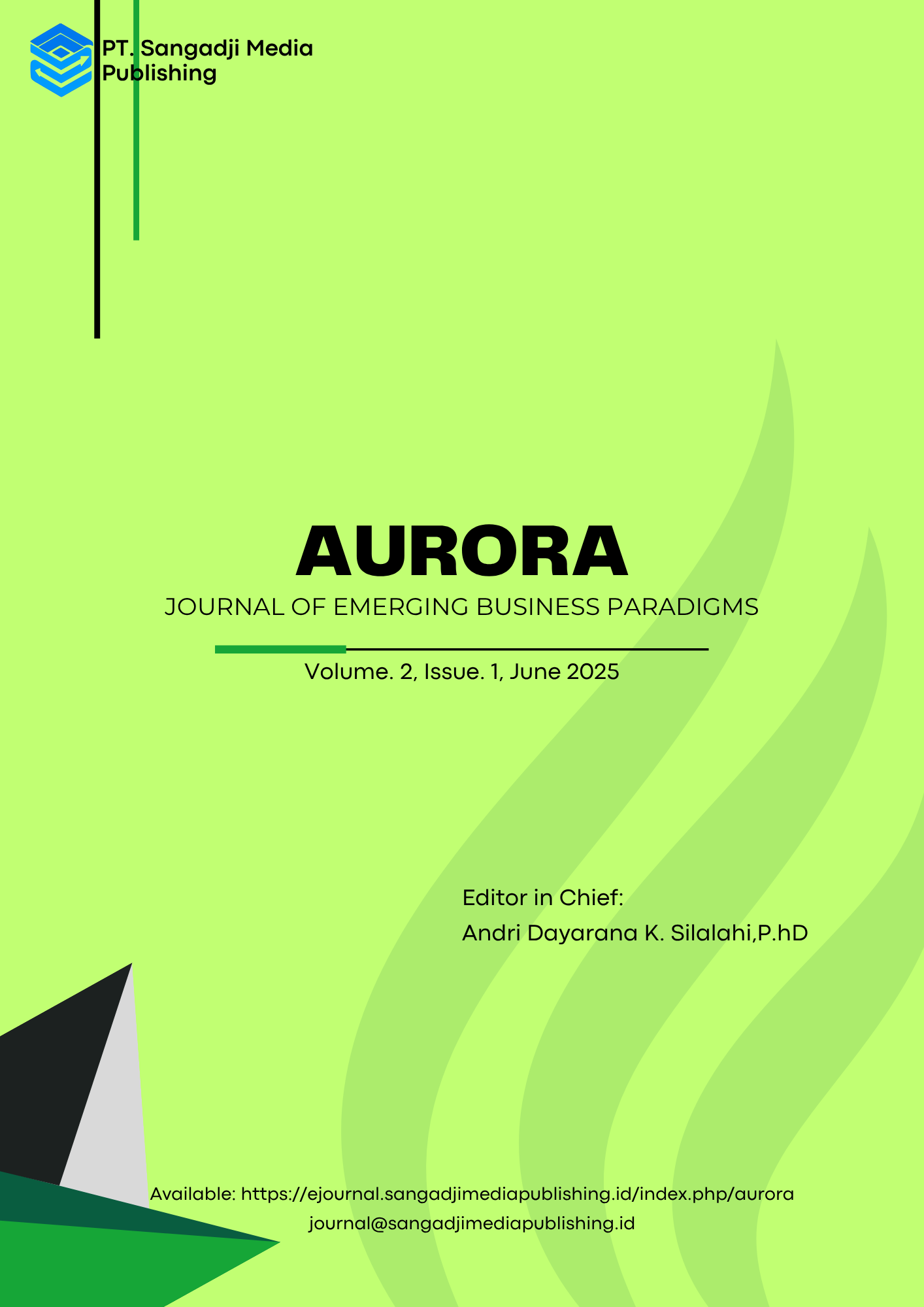Leading with Ethics and Values: Exploring the Impact on Social Innovation in the Public Sector
DOI:
https://doi.org/10.62394/aurora.v2i1.188Keywords:
ethical leadership, social innovation, public sector, vietnam, psychological safetyAbstract
This study explores the role of ethical and values-based leadership in fostering social innovation in the public sector of Vietnam. With a growing need for innovative approaches to address complex societal challenges, the research examines how ethical leadership practices shape organizational cultures that promote innovation. Through qualitative interviews with public leaders, the study identifies three key themes: (1) moral framing of innovation as a social responsibility, (2) the creation of an empowering organizational culture that fosters psychological safety for employees, and (3) the exercise of ethical judgment to navigate institutional tensions and foster change. The findings reveal that leaders who prioritize ethics and values can create an environment where innovation thrives, even in the face of bureaucratic resistance and political constraints. This study contributes to the theoretical understanding of ethical leadership in the public sector and provides practical insights for public administrators aiming to drive social innovation. The research also highlights the importance of aligning innovation efforts with core societal values, fostering an inclusive environment that encourages risk-taking, and applying moral decision-making to overcome institutional barriers. The novel contribution of this study lies in its contextual focus on Vietnam, providing valuable insights into how public sector leaders in emerging economies can integrate ethics into their leadership practices to enhance social innovation.
References
Brown, M. E., & Treviño, L. K. (2006). Ethical leadership: A social learning perspective for constructing moral identity. The Leadership Quarterly, 17(6), 595-616. https://doi.org/10.1016/j.leaqua.2006.10.004
Creswell, J. W., & Creswell, J. D. (2017). Research design: Qualitative, quantitative, and mixed methods approaches. Sage publications.
De Hoogh, A. H. B., Den Hartog, D. N., & Koopman, P. L. (2015). Ethical leadership and follower outcomes: The role of leader moral judgment. Journal of Business Ethics, 128(3), 651-663. https://doi.org/10.1007/s10551-014-2063-9
Den Hartog, D. N., & De Hoogh, A. H. B. (2009). Empowering leadership and leaders' ethical role modeling: Effects on followers' behaviors. Journal of Organizational Behavior, 30(7), 947-960. https://doi.org/10.1002/job.597
Downe, J., Cowell, R., & Morgan, K. (2016). What determines ethical behavior in public organizations: Is it rules or leadership? Public Administration Review, 76(6), 898–909.
Dziedzic, J. (2024). Cultivating Sustainable and Ethical Practices in Public Service: The Role of Employee Ethos in Shaping Public Sector Culture. Journal of Intercultural Management, 16(2), 74–96.
Edmondson, A. C. (1999). Psychological safety and learning behavior in work teams. Administrative Science Quarterly, 44(2), 350-383. https://doi.org/10.2307/2666999
Hartley, J. (2005). Innovation in the public sector: Policy and practice. Public Money & Management, 25(1), 43-50. https://doi.org/10.1111/j.1467-9302.2005.00434.x
Hasan, D. S. (2023). Assessing The Relationship between Transformational Leadership and Employee Performance in The Health Department of East Jakarta. PROCURATIO: Jurnal Manajemen & Bisnis, 2(2), 76–85. https://doi.org/https://doi.org/10.62394/projmb.v2i2.62
Hasan, D. S., & Sangadji, S. S. (2024). Fundamentals in Crafting Research and Community Service Articles. SCIENTIA: Journal of Multi Disciplinary Science, 3(1), 31–39. https://doi.org/10.62394/scientia.v3i1.102
Heifetz, R. A. (1994). Leadership without easy answers. Belknap Press.
Hutagaluh, O., Rustam, A., Sangadji, S. S., Baharuddin, I., Kurniullah, A. Z., Oskar Hutagaluh, Andi Rustam, Suwandi S. Sangadji, Ilfan Baharuddin, & Ardhariksa Zukhruf Kurniullah. (2020). Responsive Leadership in Preventing Transmission of Covid-19 in the Indonesia-Malaysia Border Area. Journal of Advanced Research in Dynamical and Control Systems, 12(02), 3274–3279. https://doi.org/10.5373/JARDCS/V12I2/S20201449
Johnson, W. G. (2020). Using precision public health to manage climate change: opportunities, challenges, and health justice. The Journal of Law, Medicine & Ethics, 48(4), 681–693.
Mendonca, M., & Kanungo, R. (2006). Ethical leadership. McGraw-Hill Education (UK).
Mozumder, N. A. (2018). A multilevel trust-based model of ethical public leadership. Journal of Business Ethics, 153(1), 167–184.
Mutuma, F. C. S. D. K. W. (2024). Ethical Leadership and Integrity in Public Service: A Comprehensive Analysis. ICS Governance Journal, 1(3), 38–52.
Northouse, P. G. (2018). Leadership: Theory and practice (8th ed.). SAGE Publications.
Patz, J. A., Gibbs, H. K., Foley, J. A., Rogers, J. V, & Smith, K. R. (2007). Climate change and global health: quantifying a growing ethical crisis. EcoHealth, 4, 397–405.
Pogo, T. (2022). Pengaruh Kepuasan Kerja, Gaya Kepemimpinan, dan Komitmen Organisasional terhadap Turnover Intention Karyawan PT. Deporindo Telekomunikasi. PROCURATIO: Jurnal Manajemen & Bisnis, 1(1), 54–66. https://doi.org/https://doi.org/10.62394/projmb.v1i1.10
Sandel, M. J. (2009). Justice: What's the right thing to do? Farrar, Straus, and Giroux.
Steiner, G., Risopoulos, F., & Mulej, M. (2015). Social responsibility and citizen‐driven innovation in sustainably mastering global socio‐economic crises. Systems Research and Behavioral Science, 32(2), 160–167.
Supriatin, F., Marliana, I., S. Sangadji, S., Afkar, Paerah, A., & Dharta, F. (2022). Metodologi Penelitian. Cendikia Publisher. https://doi.org/10.31219/osf.io/ywemh
Thomas, K. W., & Velthouse, B. A. (1990). Cognitive elements of empowerment: An "interpretive" model of intrinsic task motivation. Academy of Management Review, 15(4), 666-681. https://doi.org/10.5465/amr.1990.4310926
Downloads
Published
How to Cite
Issue
Section
License
Copyright (c) 2025 Kiet Hong Tran, Kim Van Nguyen, Thoa Thyen Ly

This work is licensed under a Creative Commons Attribution 4.0 International License.






.jpg)

.jpg)


.jpg)
.jpg)

.jpg)




